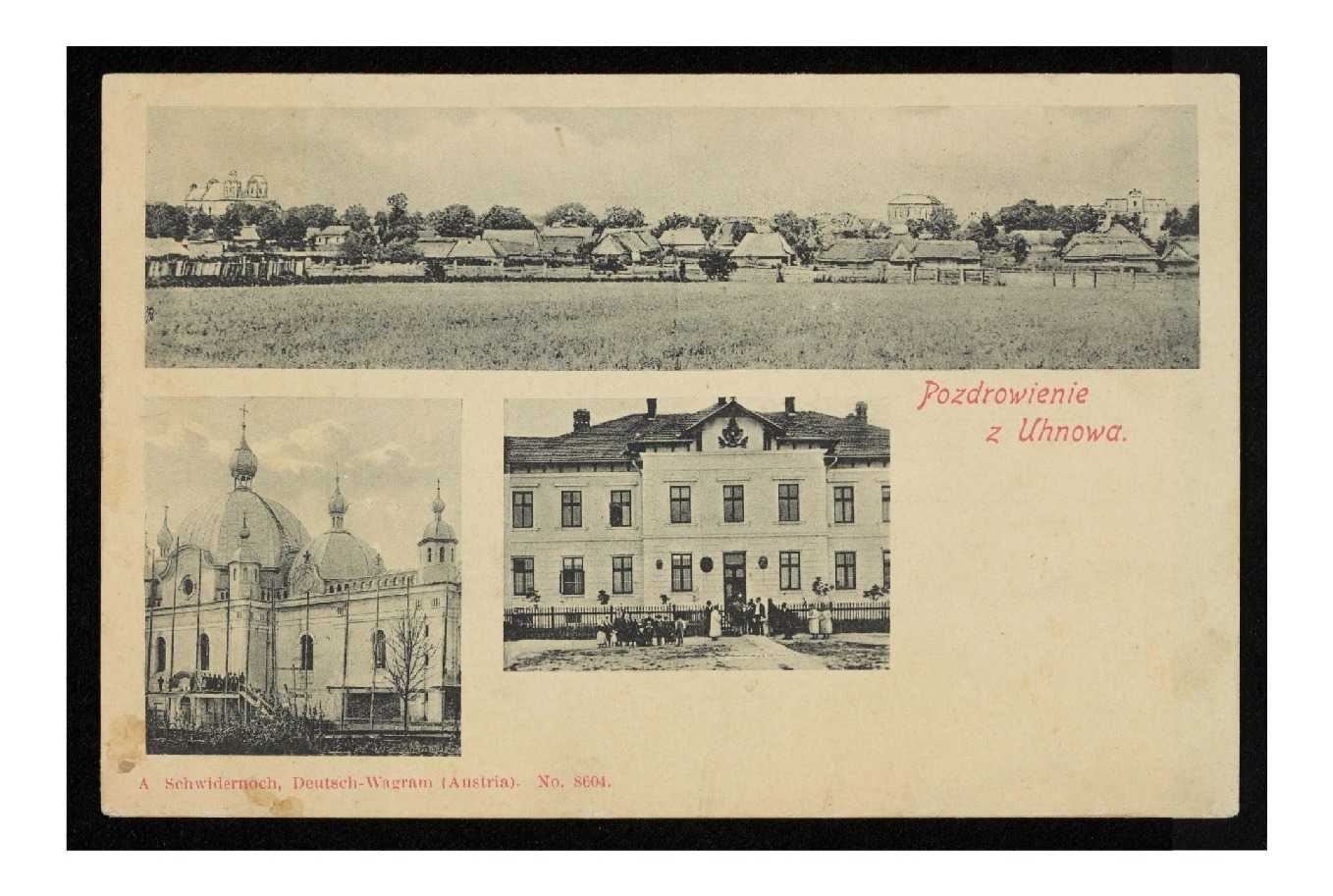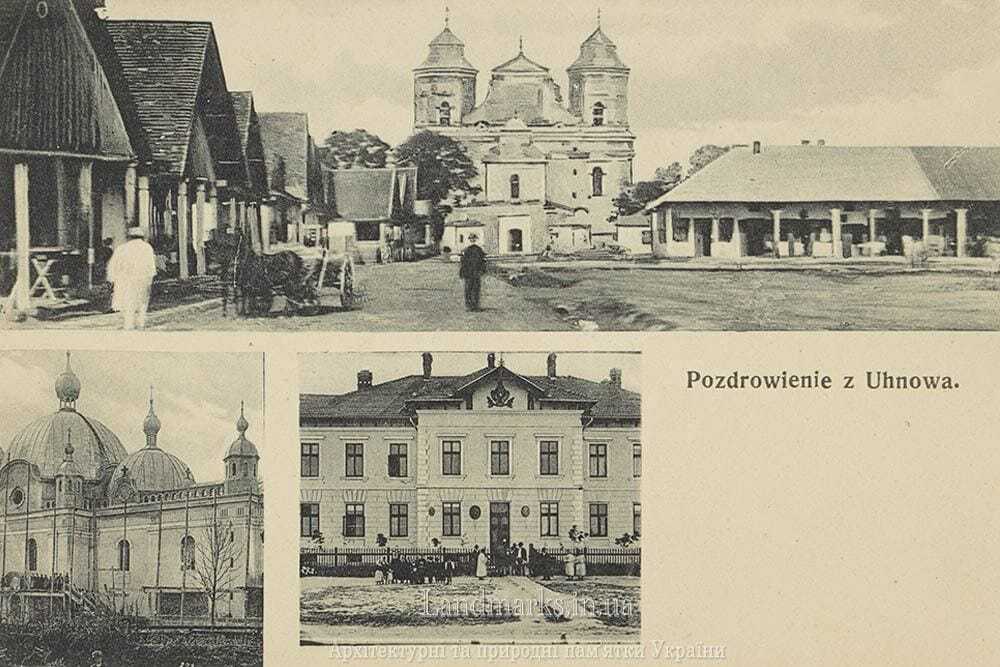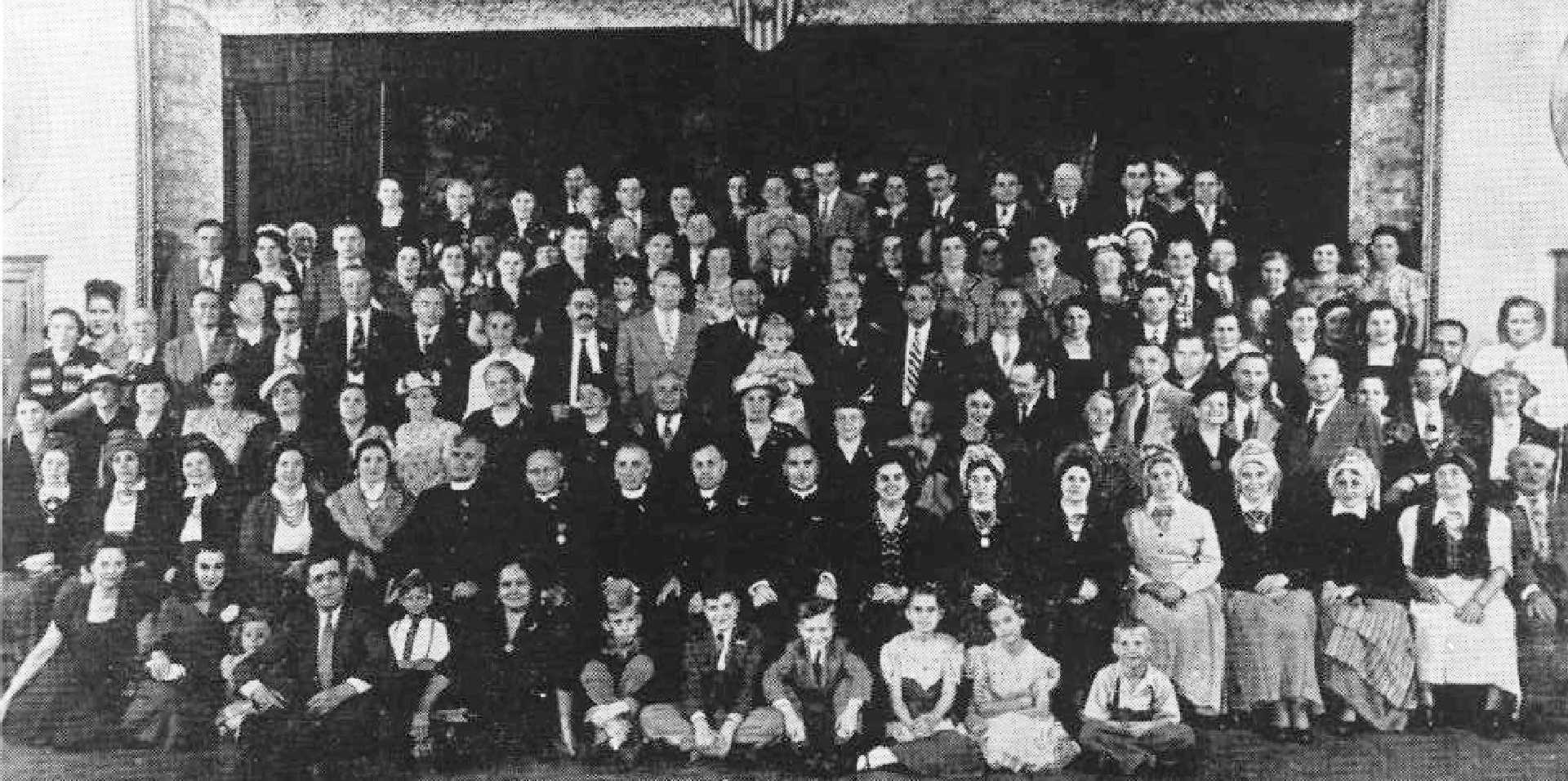The first chronicled mention of Uhniv dates back to 1360, although local researchers claim that it was known even in the times of Kyivan Rus as one of the cities of the Cherven land, which was mentioned in the "Tale of Bygone Years". Uhniv was a sentry outpost surrounded on four sides by defensive ramparts. Rather, it was not a city, but a village predominantly inhabited by craftsmen who supplied their products to princely Belz, located 45 kilometers away.
However, in 1462, Uhniv officially became a city, as by the decree of the Polish king Casimir IV, it was granted the Magdeburg law, which allowed it to have its own wójt (the highest administrative officer), public council, burgomaster and judges. A public sale was held once a week in Uhniv, and twice a year, there were organized large fairs at which Uhniv tailors, boot-makers, tanners, blacksmiths, and potters exhibited their goods.
Elderly Uhniv townspeople say that where parks and squares have grown up in recent decades, 100 years ago, the famous Uhniv fairs were bustling with people from far and wide, and even potters brought their unique Gavaret's black ceramics. At the end of October, the ash trees cover the streets of Uhniv with leaves, and this autumnal charm against the background of the old houses, creates a feeling of a real touch to an unusual history. In the days of old, the intelligentsia lived in Uhniv. They were represented by teachers, doctors, and priests. The townspeople invested all their savings and earnings in the education of their children.
Of the five main production facilities, the most famous was the production facility that was sewing Uhniv boots called “uhnivtsi”, well-known not only in the district, but also beyond its borders. Ivan Franko visited Uhniv three times and in 1900 described in detail both Uhniv boots and the process of their production.
The famous Uhniv boots, which have not survived, were sewn on one leg. They had a special cut - the forefoot was completely cut out - so no air could get inside, and they were the warmest known boots." Only the people in the old photos look as if they put on the same boots mistakenly.....
A special attention deserves Uhniv clothes. Lower middle-class people went to church wearing white blouses, cloth black or dark blue coats, which were decorated with gray karakul in the winter. Women wore special headdress - large (2x2 meters large) colourful shawls, which they tied in a special way – into fancy knots. Uhniv women, who, by the way, were mostly educated women, look like real princesses in these photos. They, say that they behaved accordingly – stood tall and behaved honourably. In this way, they emphasized their culture, femininity and beauty.... It was not easy for the woman to tie a shawl into the famous Uhniv "fancy knot" on her head all by herself, and in the past, Uhniv men helped their women with this.
A small city of Uhniv remembers Mongol and Tatar raids, and numerous fires, when the city was burned to the ground, and then rebuilt again, and epidemics of plague and cholera. However, in the 16th century (and according to some sources, in the 15th century), a school for children was opened at the Polish Roman Catholic Church. Later, Uhniv townspeople and its patrons Stepan and Pelahiia Zhukovsky built a Ukrainian bursa school for boys, and in 1855-1857 a church, which for many years remained the most beautiful in these places. The Zhukovsky Foundation did a lot for its city. In the 17th century, large and small synagogues and a Jewish school were built in the city.
At that time, the Basilian Fathers Monastery operated in Uhniv (now it houses a secondary school). Under the city, there are still underground passages, which no one has explored, but the ground above which has repeatedly collapsed. At the beginning of the 20th century, five thousand people lived in Uhniv, it had its own post office, telegraph, pharmacy, financial institutions, and gendarmery. It also had a railway connection, and during the First World War, a narrow-gauge railway was built here.
This small border town was called the Nazareth of the Ukrainian intelligentsia. Uhniv townspeople strictly adhered to their national traditions, and the Ukrainian language prevailed, although there were as many Poles as Ukrainians, with slightly fewer Jews. In the 30s and 40s of the last century, the family of the well-known Ukrainian composer Kos-Anatolskyi lived in Uhniv. His father Yosyp Kos and sister Mariia rest in the Uhniv cemetery.
Unfortunately, the city's life was interrupted in 1946-1947. At that time, almost the entire Ukrainian population of the city was evicted - some to Ternopil and Lviv regions, some to Wroclaw Voivodeship in Poland. Only a few Polish families remained in the city. Uhniv was a part of Poland until 1951 — with small breaks before and after the Second World War. And then it became a virtually closed border town of the Ukrainian SSR. Many of its residents emigrated even earlier. In the USA, they created the Uhniv Society and held their congresses. Through their efforts, the encyclopedia book titled “Historical and Memoristical Collection THE CITY OF UHNIV AND ITS REGION was compiled and published in 1960.
Many former natives of Uhniv and their families live in Poland today. Once a year, on their Dedication day, about 150 people come to Uhniv on St. Anthony’s Day. They pray in the old Roman Catholic Church built at the beginning of the 17th century, which is specially opened for the communal prayer of generations.
A special attention must be paid to the unique architecture of Uhniv. The walls of the Church of the Assumption of the Blessed Virgin Mary in the city keep thousands of prayers, secrets and stories. They are one and a half meters wide and are strong. “Elderly people say that local women used to add beaten eggs into concrete grout during the brickwork. When a brick is pulled out of the foundation, it looks as if it was burned yesterday, although it has been lying there for four centuries."
In the summer, the lower middle-class women in Uhniv wore a white shirt with a double collar, a wide skirt with pleats, an apron, “kotsabaika”, and on top of everything - a “kaftan”, and in the winter «futryna» hemmed up with white sheepskin, which they tied around themselves with Ukrainian traditional woven belt called “kraika”. On their heads they had Turkish shawls tied into a "fancy knot".
Around the neck, Uhniv woman had to have a necklace consisting of 10-12 necklace strings, in the middle of which one or two gold ducats since the time of Empress Maria Theresa were attached. It was by the number of necklace strings and gold ducats that a woman's prosperity was judged. In the summer, they wore footwear called “tsizhmy”, and in the winter –boots called "uhnivtsi".
Today, when you look at the photos turned yellow over time, from which the female and male lower middle-class people wearing Uhniv traditional costumes look at you, you are filled with pride for that small corner of the native land of the great Ukraine, which is so rich in history, customs, traditions, and rituals.
Carrying on the glorious traditions of their fellow townspeople, the present Uhniv residents try to wear Uhniv traditional clothes on Dedication days, state celebrations, festive concerts, while performing on stage. In this way, they maintain an invisible connection of generations of past and present Uhniv townspeople, which brings up the youth in the spirit of patriotism, historical memory and pride.
photo 1-2 - Uhniv 1906
photo 3 - Members of the Congress with the participation of natives of Uhniv in New York, on September 4, 1950, to commemorate 65th anniversary of a reading room of «Prosvita» in Uhniv. In the photo one can see the natives of Uhniv from the USA(the United States of America) and Canada.



